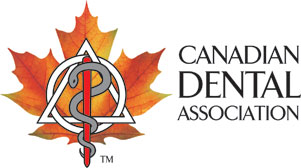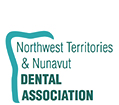The following resources are intended to help caregivers and the dental team adapt their daily skills when providing routine oral health care for persons with mobility impairments is not always possible.
These sources of information have been produced by third parties and are intended to serve as general information only. It should not be used to replace the advice of a qualified health professional. CDA is not responsible for complete accuracy, maintaining editorial control or continued availability of information provided by third party websites.
Oral Health Care Resources for Caregivers
Organization: New Mouth
Product type/format: Webpage
Information about: Many down syndrome patients understand more than they can verbalize, making visiting the dentist confusing, scary and strange. New Mouth created this guide to help caregivers understand exactly what they need to know when caring for their loved one’s oral health.
Organization: Canadian Dental Association
Product type/format: CDA Dental Patient with Special Health Care Needs Transition Process
Information about: This tool helps to guide patients, families, caregivers and oral health care providers seamlessly through the process of transition when an adolescent with special health care needs (SHCN) moves from pediatric to adult oral health care, or when an adult with special health care needs moves from one dental practice to another. The tool consists of 3 steps and can be used for and adapted to any SHCN patient group for assisting in transitioning individuals from one oral health care environment to another.
Organization: National Institute of Dental and Craniofacial Research
Product type/format: Downloadable PDF
Information about: Some patients who use wheelchairs can transfer themselves into the dental chair, but others need assistance. The extent of your involvement will depend on the patient’s or caregiver’s ability to help. Most people can be transferred safely from wheelchair to dental chair and back by using the two-person method. This guide describes a safe transfer with a minimum of apprehension for the patient and clinician.
Organization: University of Manitoba, Health Promotion Unit
Product type/format: Downloadable PDFs and Videos
Information about: A range of mouth care factsheets and video clips for caregivers of dependent individuals, including long-term care residents, including toothbrushing techniques in the wheelchair.
Oral Health Care Resources for Dentists and the Dental Team
Organization: The Canadian Society for Disability and Oral Health Dalhousie Student Chapter
Product type/format: My Trip to the Dentist YouTube Video
Information about: Check out this video promoting inclusive oral health care, designed to prepare children for their visit to the dentist.
Organization: Canadian Dental Association
Product type/format: CDA Dental Patient with Special Health Care Needs Transition Process
Information about: This tool helps to guide patients, families, caregivers and oral health care providers seamlessly through the process of transition when an adolescent with special health care needs (SHCN) moves from pediatric to adult oral health care, or when an adult with special health care needs moves from one dental practice to another. The tool consists of 3 steps and can be used for and adapted to any SHCN patient group for assisting in transitioning individuals from one oral health care environment to another.
Organizations: Canadian Dental Association and the Canadian Society for Disability and Oral Health
Product type/format: Complete Tool and Stand-alone form (downloadable PDFs)
Information about: The tool, Dental Treatment Case Complexity Assessment Form and Recommendations for Persons with Special Health Care Needs, aims to encourage private and public dental clinics to make dental services more accessible for persons with special health care needs. It may also help dentists assess the complexity of individual cases and determine whether to treat or refer these patients to clinics where specialized care can be provided. This assessment tool is not intended to evaluate specific oral health conditions or emergency oral health treatment options.
Organization: National Institute of Dental and Craniofacial Research
Product type/format: Downloadable PDF
Information about: Some patients who use wheelchairs can transfer themselves into the dental chair, but others need assistance. The extent of your involvement will depend on the patient’s or caregiver’s ability to help. Most people can be transferred safely from wheelchair to dental chair and back by using the two-person method. This guide describes a safe transfer with a minimum of apprehension for the patient and clinician.











